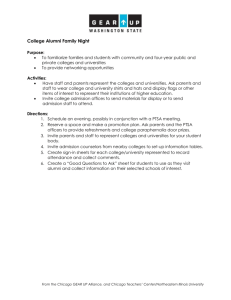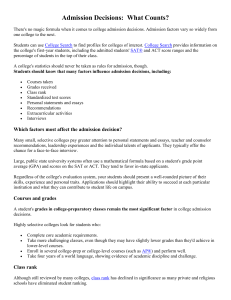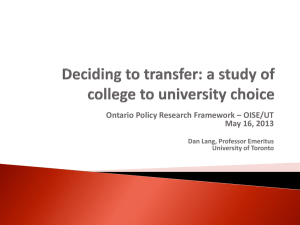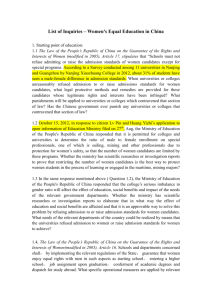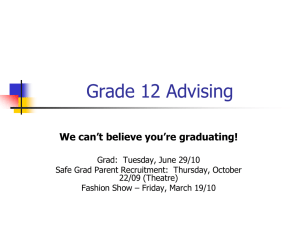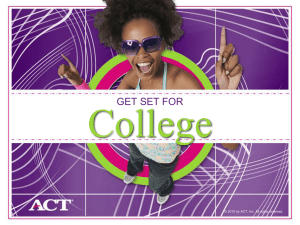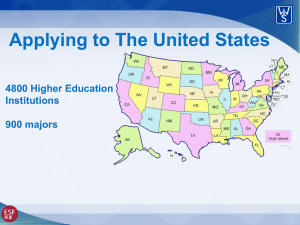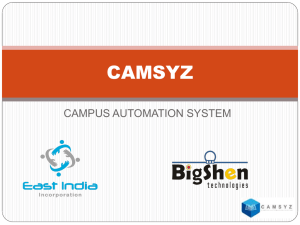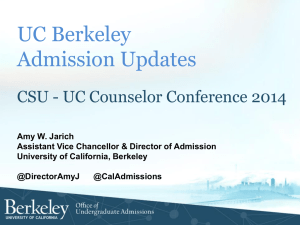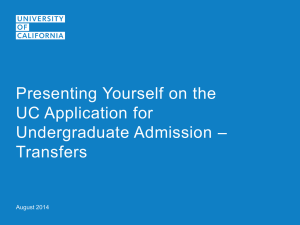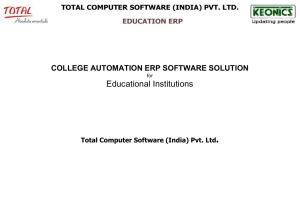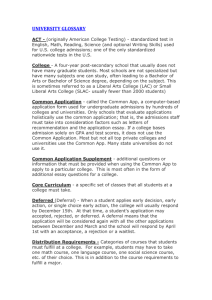Private Colleges - Bexley City Schools
advertisement
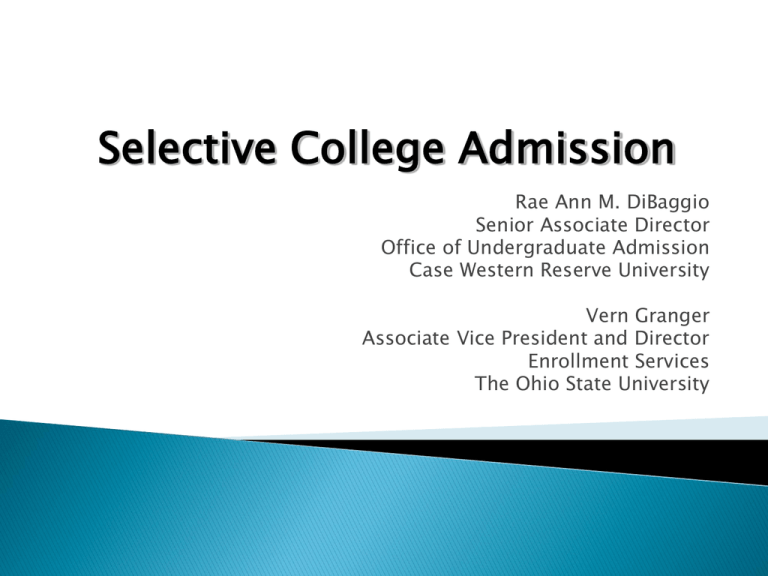
Selective College Admission Rae Ann M. DiBaggio Senior Associate Director Office of Undergraduate Admission Case Western Reserve University Vern Granger Associate Vice President and Director Enrollment Services The Ohio State University What’s the hype with the college selection process? ◦ Media attention ◦ Consumer mentality ◦ More than one good choice ◦ Being knowledgeable: helps you focus on what is important and is not as important Deciding where to apply to college can be a daunting task US boasts more than 3,800 colleges- majority accept more than half of those who apply More than 13 public and 50 private colleges in Ohio But what is important to remember is that THERE IS A COLLEGE FOR EVERYONE! Private colleges comprise about half of the accredited colleges and universities in the US They are located in all 50 states Private colleges are not funded by the state government or taxpayers. They depend on tuition, fees, private gifts, corporate gifts, and endowments Private colleges are typically more expensive than publics BUT private colleges tend to offer more scholarships and grants Possible to get a better financial aid package from a private college Publics out of state can cost as much as privates Public schools have significant graduate, masters and doctoral programs Offer a broad range of academics to chose from, including engineering, business, health and fine arts Opportunities: including large athletic programs, student involvement, research, study abroad and internships The largest universities in the country are all public, however size of public universities can vary greatly Public universities are typically less expensive than private colleges Public schools receive some but not all funding from state government or taxpayers. They also depend on tuition, fees, private gifts, corporate gifts, and endowments Open Admission ◦ HS diploma, accept on first-come first-served basis More Selective ◦ Largest group ◦ More selective than open enrollment ◦ Look at a variety of factors Very Selective ◦ Small number of schools ◦ Receive 10-15 apps per slot ◦ Tough review process for admission Admission and Application Process Types of admission: ◦ ED ED admit/deny ED defer ◦ EA EA single choice – restrictive EA EA defer EA admit/deny ◦ Regular Decision ◦ Common Application ◦ Deadlines vs. Rolling Admission ◦ Final grades do matter What are we looking for? ◦ strong record of academic performance ◦ enthusiasm for learning ◦ willingness to contribute to school and community ◦ academic promise in part by standardized testing ◦ distinctive achievements or talents ◦ knowledge of self & appreciation for individual differences ◦ demonstrated interest ◦ institutional needs/goals Vital to continue taking the most challenging courses and achieving good grades. Decisions can be reversed Essays: Recommendation Letters: ◦ The essay is also a key element ◦ Essay should grab your reader’s attention, be willing to take a risk and talk about something unique ◦ Don’t retell information already included in your application ◦ Choose a given topic to discuss or use the essay as a chance to tell the reader something about you that we may not learn form reading your application ◦ Appropriate topic/subject/language : consider if you really want the committee to know what you’re telling and HOW you’re telling it ◦ What image is left with the reader ◦ PROOF READ ◦ Choose recommenders carefully, ask those who know you well ◦ Diverse, can speak about you in several different ways ◦ Maybe ask someone with whom you have struggled, can talk about your ability to overcome ◦ Usually no more than 3 are needed Review Process First Read: Second/Final Read: ◦ Typically - counselor assigned to high school ◦ Make admission/scholarship recommendations ◦ Another admission counselor – adds another dimension ◦ Approaches review from a non-familiar look at app ◦ Committee: ◦ Some files – borderline cases ◦ All files – some schools may review every app in a discussion environment Review Process First and Second Read: ◦ Our applications are read by two independent readers for admission to the University ◦ Scholarships and enrollment into specific academic majors are decided after a student has been admitted Third Review: ◦ If the two independent readers have differing recommendations for admission, then the application is brought to a committee for final review Get to know your admission counselor Contact the schools, ask questions Events hosted locally Alumni connections Deadlines matter Be organized and read information Work in partnership with school counselor Understand that this is a process Please feel free to contact us if you have additional questions: Rae Ann M. DiBaggio Senior Associate Director Case Western Reserve University 216-368-6568 raeanndibaggio@case.edu Vern Granger Associate Vice President and Director Enrollment Services The Ohio State University 614-247-6281 granger.74@osu.edu
